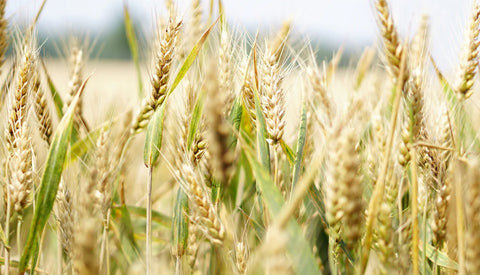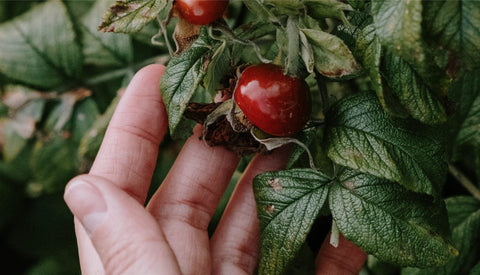You might remember the "poor people's food" if you think of millet because that was the case in the past. Even the poorer citizens could afford millet, which is probably why millet or porridge was eaten so often. Back then, people didn't know that millet is one of the grains richest in minerals and is therefore particularly healthy. Millet is full of trace elements, vitamins, and minerals.
In this article, we want to understand the small round balls better and show you why you should include millet in your diet more often.
Miracle Grain Millet: What It Can Do?
The spelled grain always comes to the store in a shelled state and is still considered a whole grain because the seedling we have in the package at the end contains the most significant value of minerals and vitamins. You can also buy millet ground or in flakes.
Millet has been a staple of our society for thousands of years and was cultivated by the Babylonians and Etruscans 6,000 years ago. It is exceptionally nutritious, can be grown anywhere without any problems, and has a ripening time of just 100 days, making it very valuable.

The small bead is full of power and supplies our body with Iron, silicon, and magnesium. Millet can strengthen our hair, skin, and nails, tighten the connective tissue and ensure a healthy complexion. Millet is also particularly suitable for people with gluten intolerance or irritable bowel syndrome, as it is naturally gluten-free and easily digestible.
The valuable nutritional values of millet make it the best grain of all, right after oats. Due to its high <>Iron and Magnesium content, millet is popular among vegans or vegetarians.
Millet has also been popular in folk medicine for a long time and is regularly and successfully used to treat cold symptoms.
Nutritional Values and Effects of Millet
When it comes to Iron content, millet is hard to beat. Because with around 9 mg of Iron, it is one of the top grain types. It ensures smooth oxygen transport in the bloodstream and helps the body with cell division and energy production. Combining it with foods rich in Vitamin C, such as red peppers, is advisable for better Iron absorption.
There are also plenty of vegetable proteins - i.e., protein - so it is worth serving this grain more often for vegans.
A total of 170 mg of magnesium strengthens our muscles and nerves. People with intestinal problems can look forward to consuming millet, as it is gluten-free and particularly gentle on our stomach and intestinal mucous membranes. Secondary plant compounds can protect and strengthen our cells and help them with cell renewal and regeneration.
The richly contained silicon or silicic acid strengthens our hair, strengthens the nails, and gives the skin a healthy appearance. The connective tissue can also be tightened again through a regular supply of silicon, which can prevent cellulite. Cell growth and structure are supported thanks to silicon, which is particularly important.
Millet also strengthens our immune system and has long been one of the natural home remedies for colds.
Do We Underestimate Millet?
Many people think of the little yellow pellet when we talk about millet. But millet comes in different colors. The exciting thing is that the different colors already indicate which nutrients are more present in them.
Since it is not a single plant species, we talk about several different millet varieties. The colors range from classic yellow to red, brown, almost white, and completely white. In the light colors, like in the yellow millet, there is a good portion of beta-carotene, which is also suitable for skin, eyes, and heart health. Red millet varieties contain more flavonoids, which strengthen our immune system. The red and brown strains also have higher antioxidant levels than their siblings.
Especially, light and therefore white millet contains a lot of protein, which is vital for our muscles and their structure.
5 Reasons to Use Millet for Your Health
As you have now learned, millet can help with some ailments and support you in your healthy body function. Here are our 5 reasons why you should increase your millet consumption:
Millet Extract Helps With Hair Loss
Due to the increased silicic acid/silicon content, millet is particularly suitable for hair growth. Silicic acid also contains keratin, a component of the hair structure, and thus helps build up the hair. So if you want to protect yourself from premature baldness, you are welcome to use millet extracts.

Relax Your Muscles with Millet
We know cherry pit pillows and their siblings, but a pillow filled with millet can also work wonders for muscle tension. Here the millet has two areas of application. Millet can store heat constantly for a very long time so that the warming treatment can relieve cramps. Conversely, treatment with cold millet grains can have an anti-inflammatory effect.
Use Millet for Body Detox
Millet can help detoxify the body and eliminate unwanted toxins. You can do this in the form of a millet cleanse or eat millet regularly. But always make sure to drink enough to flush the toxins out.
Millet is Natural Immune Booster
As already mentioned, millet can protect our cells, support them in cell formation and strengthen our immune system. Millet is often used for colds because it does not have a mucus-forming effect, unlike other types of grain. The preparation of millet is therefore viral for diseases of the respiratory tract.
Millet is Simply Delicious
Of course, with all the health benefits, we must not forget that millet is a food that can be prepared very tastily. You can try different variations and always do everything right, inventing new combinations.
How to Cook Millet: Best Tips
When preparing millet for culinary purposes, you should always cook it and not eat it raw. Raw millet contains the enzyme phytin, which can be harmful to our health. Therefore, it is advisable to soak the millet for about 2 hours before cooking and then not to use the soaking water again.
After that, the millet can be eaten and prepared without any problems. You can also roast the millet in the pan before cooking for 30 - 40 minutes. It gives it a nutty aftertaste and refines many dishes.
Hardly any other type of grain is as versatile in the kitchen as millet. You can prepare them savory, umami, or sweet, and the taste always suits the dish.
When cooking with double or triple the amount of water, you should avoid stirring it, as it can become slightly sticky and no longer absorb the liquid.
You can easily make these dishes from millet:
- Muesli
- Porridge
- Millet porridge
- Curry
- Patties
- Topping for salads
- Stuffing for vegetables
- Risotto
- Casserole
- Gratin
- Pancakes
- Flatbread
- Gnocchi
…and much more! Depending on the dish, you can combine and refine the millet with fruit or vegetables and various spices from cinnamon to curry.
Hardly any grain is as versatile as millet and can be transformed into many different dishes.
Sources:
- https://www.webmd.com/diet/health-benefits-millet
- https://www.medicalnewstoday.com/articles/what-is-millet
- https://www.mindbodygreen.com/articles/millet
Disclaimer: This article is a collaborative effort of the CLAV editorial team, created on the current literature base. All our publications are supplemented with passion and expertise for naturopathy and a healthy lifestyle. Our medical experts approve all texts before publication. Please Note: Dietary supplements are no substitute for a balanced, healthy diet or medical advice.




 DE-ÖKO-006
DE-ÖKO-006
